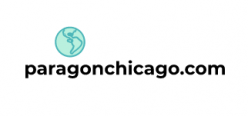Understanding Different Types of Health Insurance Plans

Understanding Different Types of Health Insurance Plans
Choosing the right health insurance plan is crucial for managing healthcare costs and ensuring access to necessary medical services. Health insurance plans come in various types, each with unique features and benefits. Here’s a comprehensive guide to understanding different types of health insurance plans:
Understanding Different Types of Health Insurance Plans
**1. Health Maintenance Organization (HMO) Plans
- Network Restrictions: HMO plans require members to choose a primary care physician (PCP) and get referrals from the PCP to see specialists. They typically have a restricted network of healthcare providers.
- Cost Structure: Generally, HMO plans offer lower premiums and out-of-pocket costs. However, they require members to use network providers except in emergencies.
- Pros: Lower costs, coordinated care through a PCP, and no need for claims paperwork.
- Cons: Limited provider network and need for referrals to see specialists.
**2. Preferred Provider Organization (PPO) Plans
- Network Flexibility: PPO plans offer more flexibility in choosing healthcare providers. Members can see any doctor or specialist without a referral, but using network providers results in lower costs.
- Cost Structure: PPO plans have higher premiums and out-of-pocket costs compared to HMO plans. Members pay a percentage of the cost for services (coinsurance) and may have deductibles.
- Pros: Greater freedom in choosing healthcare providers and no need for referrals.
- Cons: Higher premiums and out-of-pocket expenses, especially for out-of-network care.
**3. Exclusive Provider Organization (EPO) Plans
- Network Restrictions: EPO plans require members to use a specific network of providers for all non-emergency care. No out-of-network coverage is provided, except in emergencies.
- Cost Structure: EPO plans typically have lower premiums than PPO plans but do not cover any out-of-network care except in emergencies.
- Pros: Lower premiums and no need for referrals.
- Cons: Limited provider network and no coverage for out-of-network care except in emergencies.
**4. Point of Service (POS) Plans
- Hybrid Model: POS plans combine features of HMO and PPO plans. Members choose a primary care physician and need referrals to see specialists, but they can also see out-of-network providers at a higher cost.
- Cost Structure: POS plans generally have lower premiums if using in-network providers but higher costs for out-of-network care.
- Pros: Flexibility to see out-of-network providers with higher costs and coordinated care through a PCP.
- Cons: Referral requirements for specialists and higher costs for out-of-network care.
**5. High Deductible Health Plan (HDHP)
- Deductibles: HDHPs have higher deductibles and lower premiums compared to other plans. They are often paired with Health Savings Accounts (HSAs) that allow tax-free contributions for medical expenses.
- Cost Structure: Members pay a higher deductible before insurance coverage begins, but premiums are generally lower.
- Pros: Lower premiums and tax advantages if paired with an HSA.
- Cons: Higher out-of-pocket costs before the deductible is met.
**6. Catastrophic Health Insurance
- Coverage: Catastrophic plans are designed for young, healthy individuals who want to protect themselves against severe or unexpected health issues. They cover essential health benefits after a high deductible is met.
- Cost Structure: Lower premiums but high deductibles. Coverage is limited to essential health benefits.
- Pros: Low premiums and protection against major health expenses.
- Cons: High deductibles and limited coverage for routine care.
**7. Medicare
- Eligibility: Medicare is a federal health insurance program for individuals aged 65 and older, and certain younger people with disabilities.
- Parts:
- Part A: Hospital insurance covering inpatient care, skilled nursing facility care, and hospice care.
- Part B: Medical insurance covering outpatient care, doctor visits, and preventive services.
- Part C: Medicare Advantage plans that combine Parts A and B and may include additional benefits.
- Part D: Prescription drug coverage.
- Cost Structure: Varies based on the type of plan and coverage options. Some services may have deductibles, copayments, or coinsurance.
**8. Medicaid
- Eligibility: Medicaid is a state and federal program providing health coverage to low-income individuals and families. Eligibility and benefits vary by state.
- Coverage: Includes a wide range of services such as hospital and physician care, long-term care, and more.
- Cost Structure: Generally has low or no premiums and out-of-pocket costs for eligible individuals.
**9. Supplemental Insurance
- Types: Supplemental insurance provides additional coverage beyond what primary health insurance offers. Common types include dental, vision, and critical illness insurance.
- Purpose: Helps cover costs not included in primary health insurance, such as routine dental visits or vision care.
- Cost Structure: Varies based on the type of supplemental insurance and coverage.
**10. Comparing Plans
- Coverage Needs: Assess your healthcare needs, including the frequency of doctor visits, medications, and preferred providers, when comparing plans.
- Cost Considerations: Evaluate premiums, deductibles, copayments, and out-of-pocket maximums to determine the overall cost of each plan.
- Provider Network: Check if your preferred healthcare providers are in-network to avoid higher out-of-pocket costs.
Final Thoughts
Understanding the different types of health insurance plans can help you make an informed decision about the best coverage for your needs. Each plan type offers unique features and cost structures, so consider your healthcare needs, financial situation, and preferences when choosing a plan. Reviewing and comparing different options can ensure you select a plan that provides the coverage you need while managing costs effectively.

